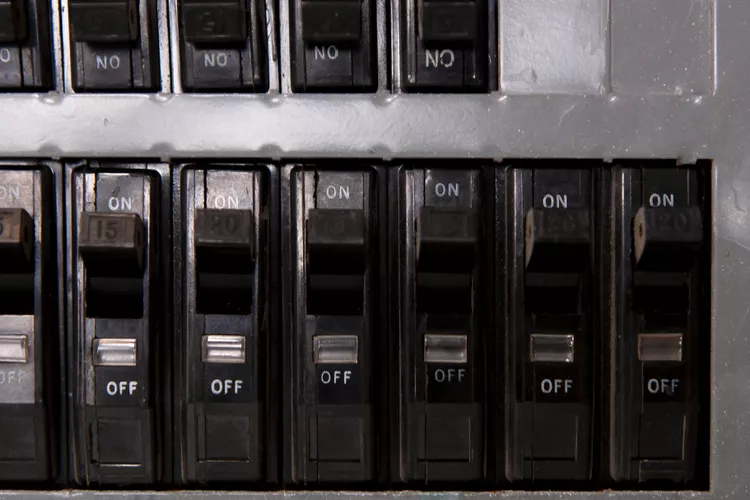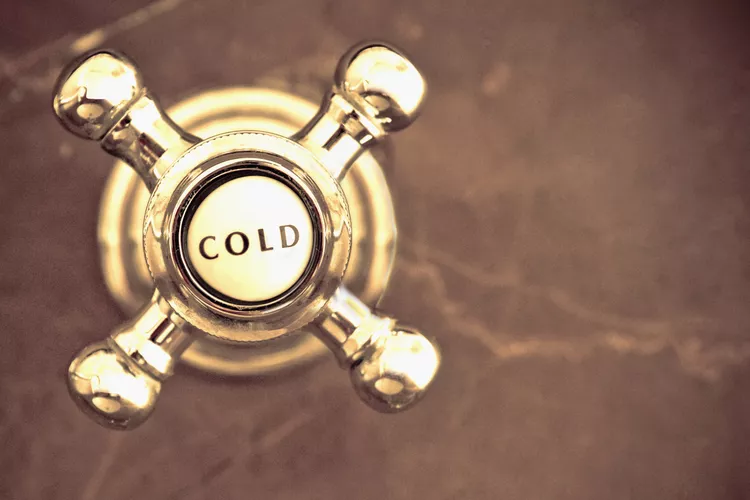When a hot water heater isn’t working, it’s normal to think that only the pros can fix it. But many problems, including leaks, inadequate hot water, or rust-colored water can be fixed by yourself. In some cases, it’s just a matter of adjusting a setting or pressing a reset button.

Check the Warranty Before You Begin
The hot water heater may have a warranty that partially covers professional repairs. Check the paperwork that came with the water heater or consult the plate on the heater’s side with the model and serial number.
These numbers detail the year the tank was made and can help you determine whether the tank has a prorated warranty that might offer a new tank or parts, either free of charge or at a discount. Warranties typically do not cover labor.
WARNING
Electric water heaters are high-voltage (240-volt). Before checking the electrical parts of a water heater, shut off the power to the heater by turning off the appropriate breaker in the electric service panel (breaker box). Also, test all wires in the water heater with a non-contact voltage tester to confirm the power is off before touching the wires.

No Hot Water
A water heater that produces no hot water might not be getting power, might have a tripped limit switch, or might have one or more failed heating elements.
How to Fix
- Check the water heater’s circuit breaker in the service panel to make sure it hasn’t tripped. If the breaker has tripped off, rock it to the OFF position, and then back to ON.
- If the heater’s breaker did not trip off, reset the high-temperature limit on the heater. Turn off the power to the water heater in the service panel. Remove the access panel. Press the high-temperature reset button, which is usually red.

Inadequate Hot Water
If your water heater is producing hot water but not enough of it, the heater could be too small to meet the household’s hot water demand.
How to Fix
If the demand for hot water is too great for the size of the heater, limit the length of showers, install low-flow shower heads, and spread out dishwashing and laundry to different times of the day.
If your unit is not undersized or it suddenly produces less hot water than before, one or both of its heating elements might have failed:
- A constant supply of lukewarm water during a shower could mean a defective upper heating element. Hot water that runs out quickly could mean a defective lower heating element.
- In either case, have a professional replace the heating elements or replace the water heater.

Water Temperature Is Too Hot
Too much hot water typically means that one or both of the hot water heater’s thermostats are set too high.
How to Fix
Turn off the power to the water heater in the service panel. Remove the access panel and check that the heat setting on both thermostats is no more than 120F°. Adjust to the desired setting by turning the set screw with a flathead screwdriver.

Water Heater Is Leaking
Water leaks in water heaters are often caused by leaking valves and plumbing connections. If you touch the water and it is warm or hot, likely the outlet pipe is leaking.

How to Fix
Inspect the water heater for loose inlet or outlet pipes. Tighten loose connections with a wrench to fix the leak.

Rust-Colored Water or Bad Odor
When brown, yellow, or red-tinted water flows from faucets, the water heater tank may be internally corroded. When water comes out smelling like rotten eggs, the hot water heater tank could contain bacteria.1
How to Fix
For tinted water, have a plumber replace the anode rod in the water heater tank. An anode rod is a metal rod in the center of the water heater that corrodes more easily than the tank itself. Oxygen, which is corrosive, is attracted more easily to the anode rod than to the water heater.
WARNING
Bacteria in potable water, or Legionella, can be fatal if ingested. Consult a professional if you suspect this.2

Tank Making Noises
Noises coming from the water heater that sound like a low rumbling, popping, or high-pitched whine could mean that the water in the tank is boiling. Sediment build-up in the bottom of the tank can cause the bottom of the tank to overheat and the water to boil.
How to Fix
Turn off the power and water supply to the water heater. Completely drain the water heater of all water and sediment and then fill it again:
- Attach the inner-threaded end of a garden hose to the valve at the bottom of the water heater, with the other end located outside.
- Open both the temperature pressure relief valve at the top and the drain valve at the bottom.
- After water and sediment have fully drained out, close the bottom valve and the upper pressure relief valve, then remove the hose.
- Turn on the power and water again.

Leaking Cold Water From an Inlet
If a pool of water develops at the top of the water heater, the cause may be a leaking cold water inlet. This inlet is located at the top of the water heater. Tightening this connection will often stop the water leakage.
How to Fix
After first turning off the water supply to the water heater, tighten the inlet connection with a wrench by turning clockwise. Turn the water supply on again, dry off the top of the water heater, and observe for leakage.

Damaged Pressure Relief Valve
The temperature pressure relief valve on the side of the hot water heater may develop a slow leak. In many cases, you can replace the valve by yourself.
How to Fix
- Turn off the electricity and cold water supply to the water heater.
- Drain water and pressure by opening the valve with a bucket placed below the plastic relief valve drain pipe.
- Unscrew the pressure relief valve with a pipe wrench.
- Screw the valve into the water heater, being sure to use Teflon plumber’s tape.
- Attach the plastic relief valve drain pipe.

Water Heater Is Leaking From the Sides
Water leaking from the sides of the water heater can indicate a tank that is leaking due to corrosion or damage. This type of water leak flows from specific areas such as holes or cracks.
How to Fix
Any tank that has damage or corrosion on the tank itself should be replaced. Tanks cannot be safely repaired.

Condensation on the Water Heater
Water heaters that appear to be leaking may actually be giving off water condensation. Water condensation will be found widespread across the outside of the tank, rather than localized as with cracks or inlet leaks.
How to Fix
Water heater condensation usually does not indicate a problem with the water heater, though excessive water can damage flooring.
- Turn down the temperature to 120F° or even lower to 115F°.
- Hire a plumber to disconnect the water heater and add a drain pan underneath to catch drips.

Tips for Water Heater Maintenance to Avoid Future Problems
- Drain the water heater at least once a year.
- Insulate the pipes.
- Have the water heater inspected regularly.
- Keep the temperature at 120F° or lower.
- Test the temperature pressure relief valve once or twice a year, with a bucket placed under the outlet tube to catch water.
- Have a plumber replace the anode rod about every five years.
-
What does it mean if the water heater is not producing hot water?
It is possible that the circuit breaker tripped or a fuse blew, so check those first if you are not getting hot water from your water heater. If that’s not the issue, then a heating element inside the water heater has burned out and needs to be replaced by a plumber.
-
At what temperature should the hot water heater be set?
The U.S. Department of Energy recommends that hot water heater thermostats be set at 120F°, but no higher than 140F°.3


Are there energy-saving measures for hot water heaters, and do they affect performance??
Are there preventive maintenance tips to keep my hot water heater working efficiently?
Are there specific safety precautions to take when troubleshooting a hot water heater?
What are common reasons for a hot water heater not working?
Thanks for the helpful tips! My hot water heater stopped working, and now I have a starting point for troubleshooting.
I never knew there were so many reasons for a hot water heater to fail. This article gave me a good understanding of what to look for and how to troubleshoot
Thorough and insightful!
Well-organized and informative.
Well-organized and informative.
Troubleshooting your hot water heater can help identify common issues and potentially save you from costly repairs or replacements.
This article helps troubleshoot hot water heater issues efficiently.
Understanding common hot water heater problems and practical solutions.
A handy guide to diagnosing and fixing hot water heater malfunctions.